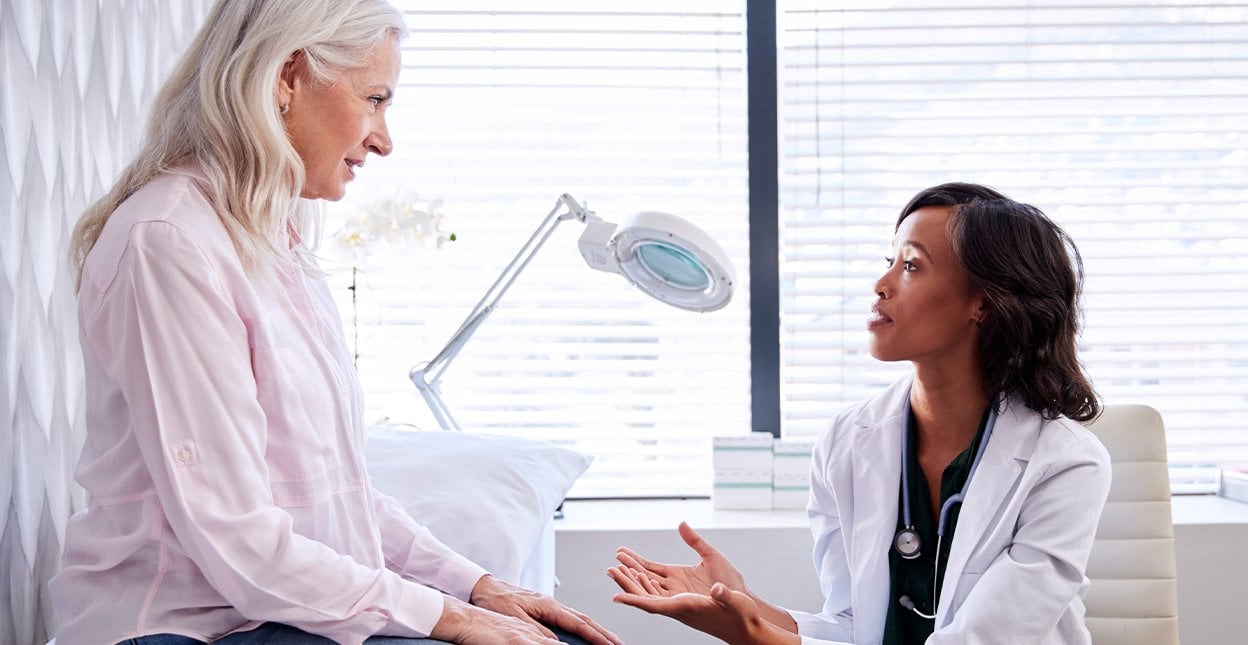Living with Weak Bladder & Leakage
One in four women will experience some degree of bladder leakage at some point in their lives. A weak bladder resulting incontinence is more common than you might think. In fact, it can affect anyone at any age, young or old, however, women are far more likely to be affected by a weak bladder than men.
While some women learn quickly to bring bladder leakage under control by sitting down or crossing their legs tightly For others, incontinence may be a sudden urge to go to the toilet, followed by significant leakage.
Understanding the type of bladder leakage (or urinary incontinence) you have, what the primary cause or causes of a weak bladder are and how to manage it effectively, will ensure that that your lifestyle is impacted as minimally as possible.
A quick look at the different types of incontinence
When it comes to the difference types, there are 3 main types of incontinence, including but not limited to:
- Stress incontinence is physical stress or pressure on your internal organs such as a cough, a sneeze or even a laugh when your bladder is full.
- Urge incontinence is the inability to hold on for more than a few minutes once you have a sudden overwhelming need to urinate.
- Overflow incontinence is characterised by leaking with no warning or urge to urinate.
While incontinence can be a difficult subject to approach, having a weak bladder is something that you shouldn’t feel embarrassed about. In fact around 4% of all adults and 25% of all women over 40 admit to having suffered from some kind of incontinence in their lifetime and through things such lifestyle changes and medications - can be managed effectively.
For those who have light bladder leakage, symptoms can be managed with the use of incontinence products like the Depend® range of guards and underwear specifically designed for urinary incontinence. Additionally you can also be further prepared for mishaps by keeping a change of clothes and underwear handy just in case.
There’s lots of potential causes of a weak bladder and subsequent bladder leakage. They can range from weakened pelvic muscles from childbirth, to bladder or even prostate cancer. The most common reason for bladder leakage can often be due to pelvic floor muscles weakening over time usually due to things such as pregnancy, childbirth, and the onset of menopause.
Here are some of the other common causes that can also lead to bladder leakage:
- Pregnancy
- Childbirth
- Menopause
- Diabetes
- Age
- Obstructions in urinary tract (eg tumours)
- UTIs (urinary tract infections)
- Bladder infection
- Kidney infections
- Prolapse
- Bladder cancer and prostate cancer
- Bladder and kidney stones
- Enlarged prostate
- Nervous system afflictions including: Spinal cord injury, Stroke, Parkinson’s disease, Dementia, Multiple Sclerosis
- Nerve damage or trauma caused by surgery or certain therapies
- Spinal injury
- Trauma to the pelvis (eg car accident)
- Obesity
A note for men
One of the primary reasons for incontinence in men is most commonly due to an enlarged prostate. If you believe you are or could be suffering from an enlarged prostrate, you should see your doctor as soon as possible to get your symptoms checked by a healthcare professional.
There are many things that can cause a weak bladder and subsequently lead to bladder leakage. Consequently, there are a few different options to consider depending on the type of incontinence you have.
The first thing to remember is that you’re not alone and that this common condition, is easily managed andin some cases, may be resolved.
However, if you find the following methods aren’t helping, there may be another underlying medical problem causing your bladder leakage. Have a chat with your doctor if you’re concerned about a weak bladder and any subsequent leakage.
Here are some solutions that you may find can help a weak bladder.
Incontinence products
One of the simplest ways to manage incontinence whether temporary or ongoing, is to use the Depend® range of incontinence products. It doesn’t matter if your bladder leakage is light or quite heavy, Depend® products have you covered with everything from liners to underwear.
Lifestyle changes
- Make it easy to get to the toilet. Ensure there are no obstacles preventing you from getting to the toilet quickly. If mobility is an issue for you, you can consider installing in-home adaptations like handrails or a raised seat in your toilet. As well as this, having a commode nearby can also be a helpful option.
- Cut out or reduce your caffeine intake. Coffee, tea, cola, and some painkillers all contain caffeine, which can have a diuretic effect, making you want to wee more often. Caffeine itself can also directly stimulate the bladder making urgency symptoms worse. Try eliminating caffeine from your diet and see if your condition improves.
- Alcohol. Some people who suffer from a weak bladder are affected by alcohol in the same way that others are affected by caffeine – with it having a diuretic effect. Again, try cutting down your alcohol intake and see if your incontinence symptoms improve.
- Drink normal quantities of fluids. Drinking less may seem like a good idea, however, dehydration can actually make your symptoms worse. This is because your urine becomes more concentrated, which can irritate the bladder muscle. Instead, aim to drink two litres of fluid per day (6-8 cups) and aim to drink more in hot conditions to prevent dehydration.
- Go to the toilet only when you need to. Don’t go to the toilet more often than you need to. You may think it’s a good idea to go often so as not to be ‘caught short,’ but this can promote an overactive bladder and make your symptoms worse in the long run. It can also mean that your bladder becomes used to holding less urine making it even more sensitive and overactive at times when you need to hold on a bit longer.
- Lose weight. If you’re overweight, then this can potentially put additional strain your pelvic floor muscles, so losing some weight can in some instances help to improve your incontinence symptoms.
- Check your medications. Medications like antihistamines, tricyclics (antidepressants), or blood pressure tablets, can sometimes interfere with muscle contraction in the bladder and urethral sphincter, making incontinence symptoms worse. If you are concerned, you can ask your doctor about bladder-friendly alternatives.
Kegel exercises
Kegel exercises or pelvic floor exercises are the main treatment for stress incontinence. These exercises are designed to strengthen the muscles that support the bladder, uterus (womb) and rectum. Pelvic floor exercises also help if you are doing bladder training.
Kegels are a mainstay of incontinence therapy. Women with stress incontinence who consistently do Kegel exercises experience a 70% improvement in symptoms, and experts believe building these muscles may also help with urge incontinence. Kegels work by thickening the muscles that hold your bladder, urethra and other organs in place.
If you’re just starting out with pelvic floor exercises, ease yourself in gently and try contracting your pelvic-floor muscles for five seconds, and then relax them for five seconds, repeat this five times, 10 to 20 times a day.
Bladder training
For those with urge incontinence, bladder training may help. With this form of behaviour therapy, you make yourself wait when you feel the urge to urinate, gradually increasing the intervals between bathroom trips. It can also be a good idea to keep a bladder diary to keep track of your progress.
Vaginal pessary
Vaginal pessary is a flexible silicone ring inserted into your vagina where it pushes up on the vaginal wall and urethra to help support the bladder and uterus. A doctor or nurse can fit one for you, but you’ll need regular check-ups to make sure it doesn't irritate your vagina.
Electrical stimulation
Electrical stimulation is a painless process that involves delivering gentle volts of electricity, through a vaginal probe to activate and strengthen pelvic-floor muscles. Sometimes, (and used only for urge incontinence), a device is implanted under the skin of the upper buttock to stimulate the sacral nerve, which connects to the bladder and pelvic floor.
Medications
If things don’t improve with bladder training, there are some medications called antimuscarinics (also called anticholinergics) which your doctor may recommend.
Incontinence medications work by blocking certain nerve impulses to the bladder, which in turn relaxes the bladder muscle, thereby increasing the bladder’s capacity.
It works well if you take the medication in combination with the bladder training. A common plan is to try a course of medication for a month or so. If they help, you may be advised to continue for around six months and then stop the medication altogether to see how symptoms are without the medication.
By combining a course of medication with bladder training, the long-term outlook may be better and symptoms may be less likely to return when you stop the medication.






